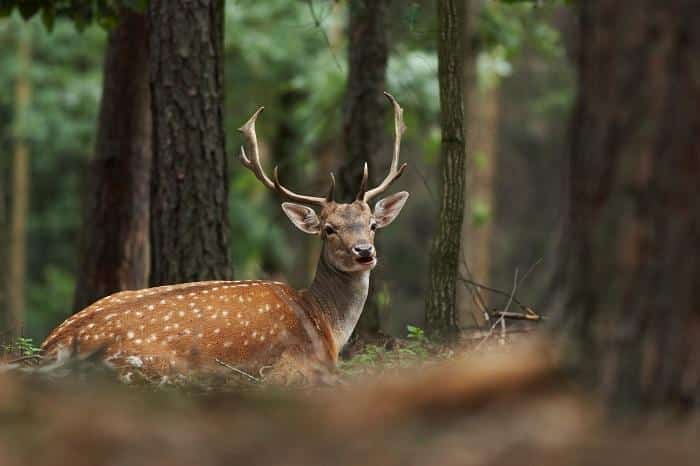Many hunters often wonder how they can increase game and resources on their own land. In short: How can you make your own land, farm or homestead a “mini-game preserve”?
It won’t happen overnight, but there are some practical steps to increase game numbers on your land.
Here are some tips:
Abandon Clean Farming Techniques
Put aside the modern way of farming. Replant native grasses and shrubs on field edges to provide cover for turkey, quail, deer and other wildlife. Over the past decades large companies have urged farmers to clear grasslands on farms to reduce the chance of crop contamination — the belief being that rodents and critters living in shrubs and grass will contaminate fields with bacteria. In truth, there are just as many rodents in a field after you clear your grass and shrubs away. Grasslands prevent erosion, stop fertilizer and pesticides from reaching waterways, and provide cover and forage for wildlife.
When you harvest corn, soybeans and other similar crops, leave three to five rows standing along the edges of fields, and 10 rows in the corners. To prevent soil erosion, leave one to two rows standing down the center of the field. These are old practices that have only recently been abandoned.
Mowing grass and hay should be done after nesting season for game birds is complete, and after deer fawns have dropped. Where I live in Tennessee, deer fawn and birds nest in April and May. By mid-June, it is safe to start mowing hay and grass for maintenance of grassland. For haying, consider not mowing the 30 feet along the edges of the field. This tends to be the least productive part of a hay field anyway, and can be used for wildlife cover.
Learn The Secrets Of A Veteran Hunter As He Demonstrates How To Quickly Field-Dress Game
In some places, prescribed burning of native grasses allows for healthy regrowth, and elimination of invasive species and weeds.
Improve Water Access
Water is a must for wildlife. Improving water sources is imperative to any conservation effort. Cleaning up streams from garbage and trash left by years of neglect is a first step. Planting trees along streams that have been stripped of cover is the next. A stream should have at least 20 feet of hardwoods on either side; this improves stream cover, water and fish quality, and protection for wildlife. Keeping cattle away from streams goes a long way toward cleaning them up.
Clean ponds are another source of water. If you are planning to add a pond, try to place it as deep in your property as possible, smack dab in the middle. This attracts wildlife and keeps it on your land. Be sure the edges of the pond are well-planted with grasses and shrubs to prevent erosion.
Add Food Plots
Adding one food plot on a small piece of land, or several food plots on larger land tracts, provides forage for your game animals. Different areas of the country require different grasses and clover, and you will need to research your particular location for recommended forage.
Typically, a food plot should be between half an acre to 10 acres in size. It should be a cleared area in the middle of a wood lot, situated near good cover for wildlife. A good water source should not be far off.
Manage Forests
Younger hard mast-producing trees such as oak and chestnut produce more forage than older trees. It is a well-known fact that younger forests are healthier for wildlife than old forests. No, I am not advocating chopping down old growth trees. However, woods management is important. Thinning out thick hardwoods and occasionally clear cutting a few acres is very healthy for forests. As new trees populate the woods, the amount of hard mast that hits the ground every fall will increase for wildlife.
Grow An Orchard
In addition to hard mast, soft mast is a favorite of wildlife, especially deer. Planting apple, pear, cherry and peach trees will actually improve game forage. Don’t harvest every apple, and leave around one-fourth or more of the produce from these trees for wildlife if possible.
What tips would you add to this story for attracting wildlife? Share your ideas in the section below:
Learn How To ‘Live Off The Land’ With Just Your Gun. Read More Here.
